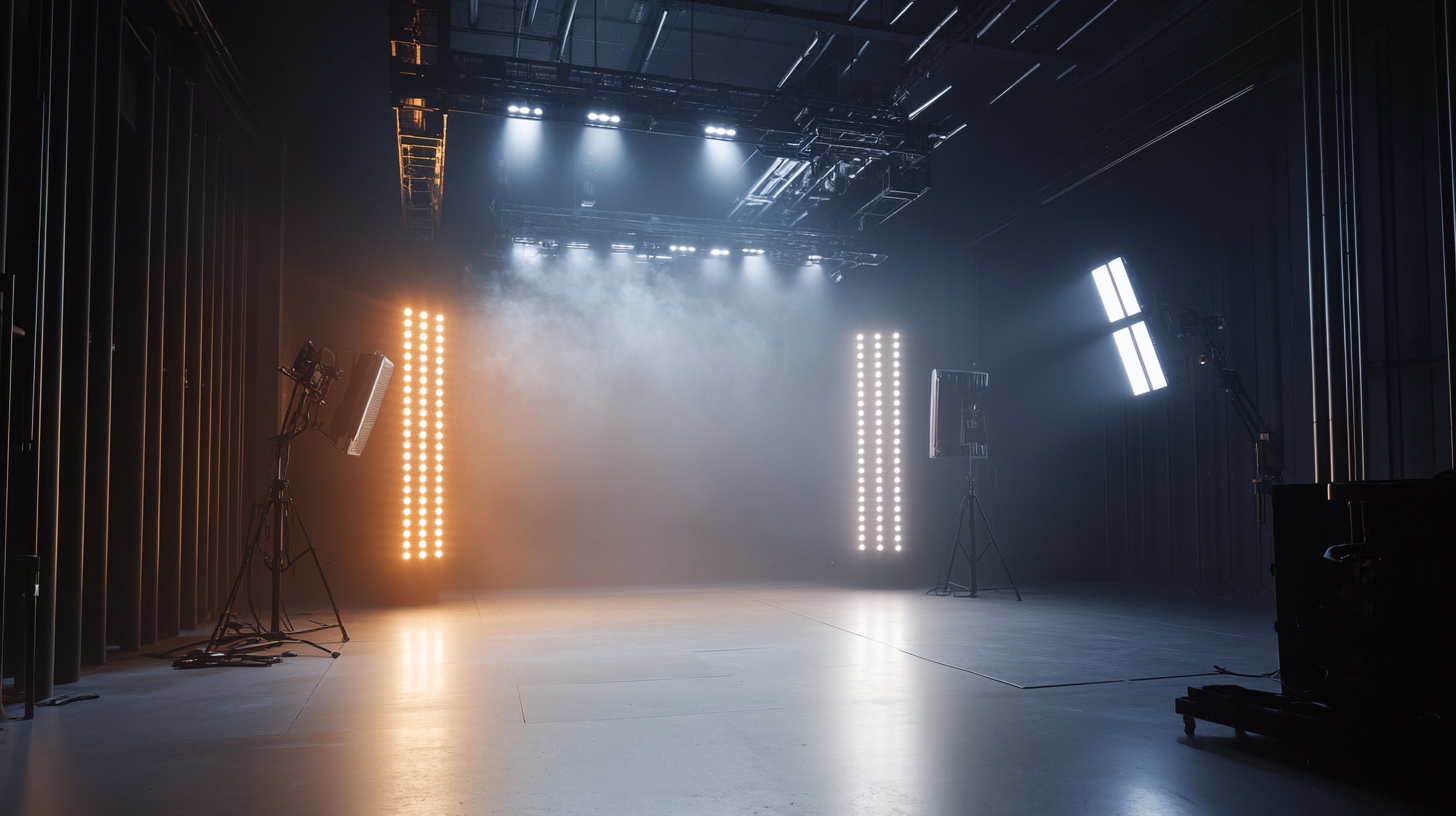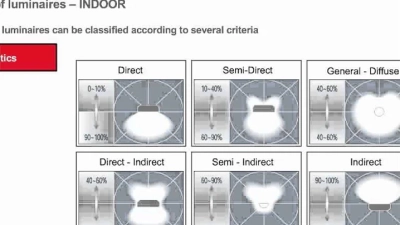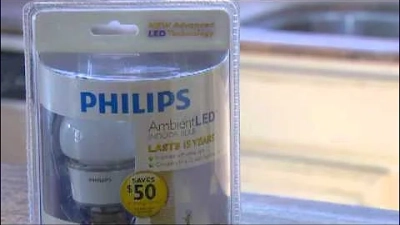Innovative Strategies for Maximizing Lighting Lumens Efficiency
In the quest for energy efficiency and sustainable design, maximizing lighting lumens efficiency is more crucial than ever. Recent studies highlight that lighting accounts for about 15% of global electricity consumption, with some reports indicating that inefficient lighting practices can lead to wasted energy costs amounting to billions annually. According to the U.S. Department of Energy, improving lighting efficiency through innovative technologies and strategies could potentially decrease this number significantly. By focusing on methods to enhance lighting lumens, businesses and homeowners alike can make substantial strides towards reducing energy bills and carbon footprints.
Moreover, advancements in lighting technology are arising at a rapid pace, with LED lighting becoming a game-changer in the industry. Researchers estimate that integrating LED technology can achieve up to 80% greater efficiency compared to traditional incandescent bulbs. With the global LED market projected to grow exponentially, estimated to reach $110 billion by 2027 according to Markets and Markets, it is vital for stakeholders to embrace innovative strategies to maximize lighting lumens efficiency. This blog will explore various approaches and techniques, ensuring that both new constructions and retrofits can utilize lighting to its full potential, thereby contributing to a more sustainable future.

Understanding Lumens and Their Role in Lighting Efficiency
Understanding lumens and their impact on lighting efficiency is crucial for both consumers and industry stakeholders. Lumens, a measure of the total amount of visible light emitted by a source, are becoming a key metric in evaluating lighting options. With the recent push from the Department of Energy to propose a standard of 120 lumens per watt for general service light bulbs, it becomes evident that the focus is shifting towards maximizing light output while minimizing energy consumption. This initiative aligns with the growing demand for energy-efficient solutions as the industry seeks to reduce carbon emissions and overall energy usage.
New research has also highlighted how the timing of subsidies and policies can influence consumer choices between compact fluorescent lamps (CFLs) and light-emitting diodes (LEDs). Studies suggest that while CFL subsidies may have initially boosted their sales, they inadvertently crowded out the quicker adoption of LED technology, which offers superior lumens efficiency. The transition to LEDs, which can convert a higher percentage of electric energy into visible light, presents a significant opportunity for industries aiming to adopt more advanced lighting solutions in a cost-optimized manner.
Furthermore, the advent of "Lumens as a Service" (LaaS) showcases how businesses can leverage innovative models to provide customized lighting solutions. Research indicates that the LaaS market could represent a multibillion-dollar opportunity, allowing companies to implement sustainable and efficient LED lighting systems. As lumens play a pivotal role in these strategies, understanding their measurement and application will be fundamental for stakeholders in the lighting industry as they navigate the complexities of modern energy consumption and efficiency standards.

Exploring Advanced Technologies for Enhancing Light Output
Advancements in lighting technology have revolutionized the way we approach lumens efficiency, with researchers and manufacturers consistently seeking innovative strategies to enhance light output. One of the most significant developments is the adoption of LED technology, which offers remarkable efficiency compared to traditional incandescent bulbs. According to the U.S. Department of Energy, LED lighting uses at least 75% less energy and lasts 25 times longer than incandescent lighting. This allows for substantial savings and a lower carbon footprint in commercial and residential applications.
In addition to utilizing LED technology, integrating smart lighting systems can further enhance lumens efficiency. These systems, which can adjust based on occupancy and natural light levels, have been shown to reduce energy consumption by up to 40%. A report from McKinsey estimates that smart lighting in office buildings can lead to a 20% reduction in energy costs, making it a compelling option for maximizing lighting lumens while minimizing operational expenses.
Enhanced technologies such as tunable white light are also emerging as an innovative solution in the quest for better lumens efficiency. These systems allow for precise adjustments in color temperature and intensity, promoting a more dynamic and comfortable lighting environment. Research published by the lighting industry suggests that environments utilizing tunable white light can improve productivity and wellbeing, ultimately translating to increased ROI for businesses. By embracing these advanced technologies, industries can not only enhance their lighting output but also contribute to a more sustainable future.
Innovative Strategies for Maximizing Lighting Lumens Efficiency
| Strategy | Technology Used | Lumens Output | Efficiency (%) |
|---|---|---|---|
| Adaptive Lighting Control | Smart Sensors | 1200 | 85 |
| LED Upgrade | High-Efficiency LEDs | 1500 | 90 |
| Reflective Surfaces | Mirrored Finishes | 1100 | 80 |
| Daylight Harvesting | Automatic Dimming | 1300 | 88 |
| Smart Lighting Systems | IoT Integration | 1400 | 92 |
Designing Optimal Lighting Layouts for Energy Efficiency
The importance of designing optimal lighting layouts for energy efficiency has never been more pronounced, especially in the context of sustainable multi-story building designs. As the building industry increasingly embraces green development, using innovative strategies to maximize lighting lumens efficiency becomes crucial. This involves considering not only the quantity of light produced but also the quality and distribution of that light within a space. Effective lighting design can significantly reduce energy consumption, leading to lower operational costs and a smaller carbon footprint.
Incorporating smart lighting systems, such as those based on distributed wireless sensor networks, is a forward-thinking approach in achieving energy-efficient designs. These systems can adjust the lighting levels dynamically based on occupancy and natural light availability, ensuring that lighting is used only when and where it is needed. By utilizing sensors and smart technologies, building designers can create environments that enhance user experience while minimizing energy waste.
Moreover, the integration of these lighting systems with the building’s overall energy strategy can lead to comprehensive sustainability. By aligning lighting design with principles of embodied energy and cost efficiency, architects and engineers can develop spaces that not only meet aesthetic and functional requirements but also contribute to the larger goal of environmental stewardship. In this evolving landscape, the role of innovative lighting layout design is pivotal in shaping sustainable architecture for the future.
Sustainable Practices in Lighting: Reducing Waste and Maximizing Impact
In the quest for sustainable practices in lighting, reducing waste and maximizing impact is more crucial than ever. One effective strategy is the implementation of energy-efficient lighting technologies, such as LED bulbs, which consume significantly less power than traditional incandescent options. These advancements not only lower electricity bills but also contribute to a reduction in greenhouse gas emissions. Transitioning to LEDs can lead to a significant reduction in light waste, as these systems are designed to emit more lumens per watt, translating to brighter spaces with less energy consumption.
Moreover, incorporating smart lighting systems plays a pivotal role in enhancing efficiency. By utilizing sensors and timers, we can ensure lights are only used when necessary, effectively minimizing energy waste. For instance, occupancy sensors can automatically turn off lights in unoccupied areas, while daylight sensors adjust artificial lighting based on the presence of natural light. These technologies not only improve the overall sustainability of lighting practices but also create a more adaptive and responsive environment.
Recycling and upcycling old lighting fixtures is another sustainable approach to consider. Rather than discarding outdated fixtures, refurbishment can breathe new life into them, reducing the demand for new products and keeping waste out of landfills. This approach not only maximizes the lifespan of existing materials but also reflects a commitment to environmental responsibility. By embracing these innovative strategies, we can ensure that our lighting practices are not just efficient but also sustainable, ultimately creating a brighter and greener future.

Future Trends in Lighting Technologies and Their Efficiency Potential
The landscape of lighting technologies is evolving at a rapid pace, driven by innovation and a growing emphasis on energy efficiency. As we look toward the future, several trends are emerging that promise to enhance the efficiency potential of lighting systems. One of the most exciting developments is the integration of smart technology in lighting solutions. With the advent of Internet of Things (IoT) devices, lighting can now be remotely monitored and controlled, allowing for optimal use based on real-time conditions. This means that energy consumption can be significantly reduced during off-peak hours or when spaces are unoccupied.
Another key advancement is the progression of LED technology, which continues to become more sophisticated. New materials and designs are being explored to improve lumens per watt efficiency, minimizing wasted energy while maximizing light output. Innovations such as organic LEDs (OLEDs) and quantum dot LEDs are also paving the way for lighting that is not only more efficient but also more versatile, with applications ranging from architectural lighting to customizable displays.
Lastly, the focus on sustainability is reshaping lighting strategies. Future technologies will likely prioritize eco-friendly materials and manufacturing processes, ensuring that even as brightness and efficiency increase, environmental impact decreases. This holistic approach not only addresses energy efficiency but also aligns with global initiatives aimed at reducing carbon footprints, making modern lighting solutions a cornerstone of sustainable development.
Innovative Strategies for Maximizing Lighting Lumens Efficiency
This chart displays the projected efficiency improvements in various lighting technologies over the next decade. The data shows the expected increase in lumens output while maintaining or reducing energy consumption.
 Skip to content
Skip to content


